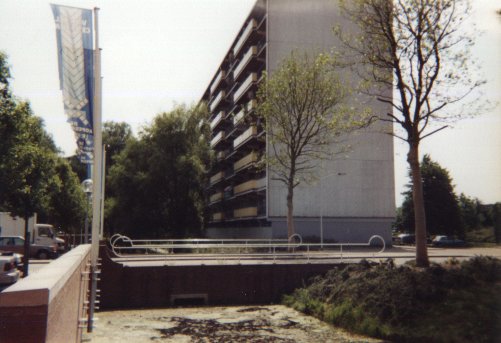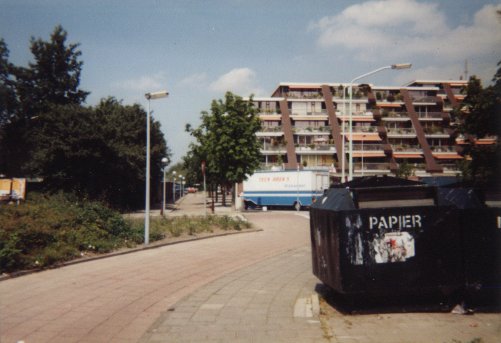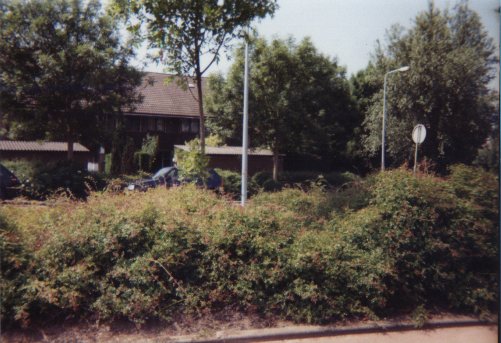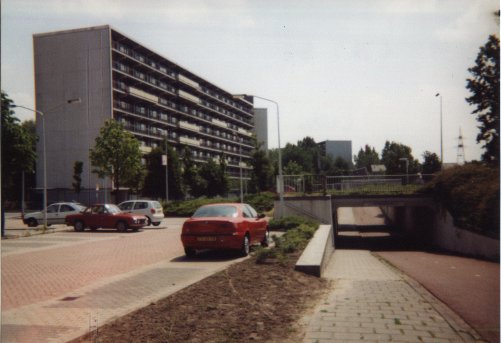


A child of suburbs, the first time I moved into an urban habitat was when I attended university in Leiden (or, if you want to be archaic, "Leyden") a one-time textile-producing town whose centre has been dominated for several centuries by the University of Leiden and its students, who rent rooms, party, hog the public libraries and work cheap in cafes and the like to finance their studies. All this learnedness does have an uplifting effect on this town with its rather coarse natives, and so I have fond memories of the place. Its centre is architecturally quite beautiful, in an unobtrusive way. The town's outskirts vary from ugly to extremely depressing; I remember an area, which I have no snapshot of as I've never been able to locate it again after drifting into it a long time ago (maybe it was all a bad dream?) which made me think I'd landed in a slum; not the glamorous kind with a gun-slinging gangsters and a dealer at every corner, but the home of penniless factory workers who can't hang their laundry outside to dry because the soot from the factory chimney will turn it black. The most pleasant thing about Leiden is its relative smallness and compactness; you don't need a car to get from one end of town to another, and yet it has all the shops you need. This means I could rely on my feet to take me anywhere I needed to be; most people there use bicycles, to the point where one could say Leiden is overrun with bicycles. It is also overrun with North African immigrants, the so-called "gastarbeiders", and their descendants, often born and raised here and possessing a Dutch passport, but still called "foreigners" by racist political parties. Any country has its share of immigrants and generally they will be a mixed bunch, but Leiden has Moroccans, Egyptians and very little else. A German tourist who I was pointing the way made me smile by remarking that there were "so viele Dunkelhautigen" (so many dark-skinned people) here, so I don't think she'd ever been to Amsterdam. But while Amsterdam has houses of worship for every religion, Leiden has a bunch of churches - some recycled into university buildings - and five mosques; one of them just behind a university building, so at the end of every Friday a trickle of students crosses paths with a trickle of bearded old men, both, generally, on bicycles.
I've taken very few pictures of Leiden: some highlights from the town centre, offset by the drabness of an area in which, misleadingly, every street takes its name from a precious stone, and which is consequently known as "Diamantbuurt" ("the diamond quarter").
The entrance to Leiden Central Station (as if there were other stations in Leiden; okay, there is one called "De Vink" where no train ever stops), drastically remodelled into an open lattice of white-painted steel with a clock in there somewhere (a round blur on the picture, above the yellow sign) and a very large parking space for bicycles, which people kept parking all over the station despite urgent requests not to do so and frequent removals.
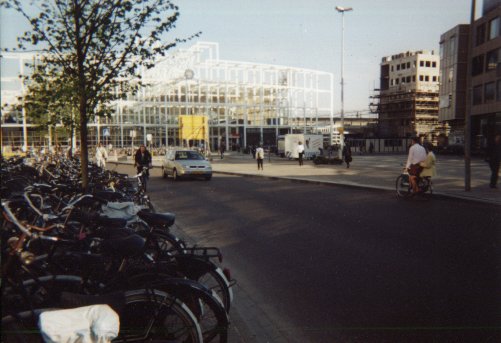
Backs of stations often look on the seamy side; they are the side of the station travellers don't have to see, and as a result get a little neglected. Not that the back of Leiden Central is unused: just behind the station is a hospital with extensive grounds. Behind that are some monumental buildings. It still has that seedy back-of-station look.
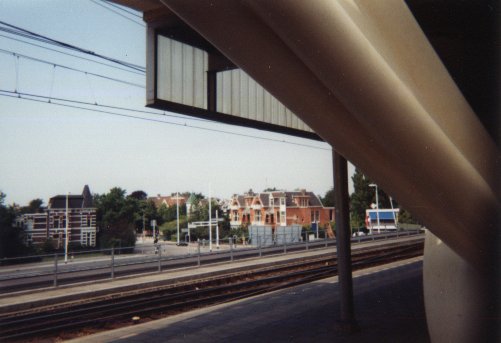
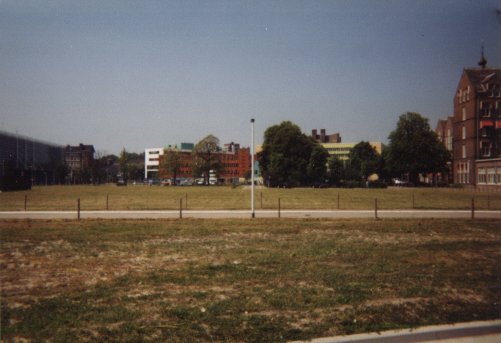
I did say Leiden is overrun with bicycles? Yes, this responsible adult grownup is cycling on the pavement. Behind her an ornamental chimney stretches up, while the next picture features a beautiful building in red brick that for years I cycled past obliviously, only noticing it had holes in the roof. Repairs have been made since then on both this house and others like it, and presumably they're inhabited again; a shame to let houses like this sit and moulder.
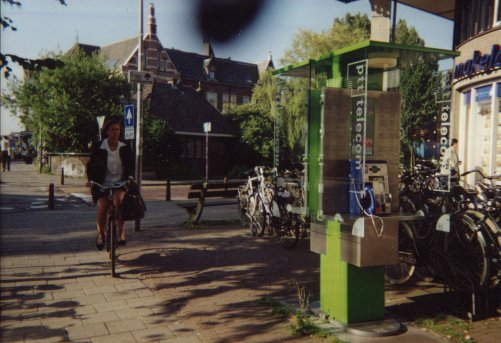
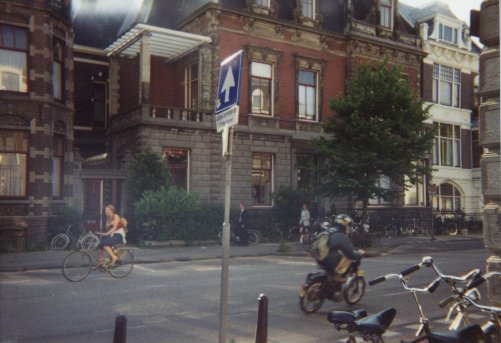
The heart of Leiden: a curve in the road that swings over the bridge to "Haarlemmerstraat" (just off the photo) where most of the shops are, and two street organs which, if one lives there and has to pass them every day, gets bloody annoying. A pretty street lamp, a town map which shows the commercial poster on its back (another cigarette ad?) and a sign pointing out the town's main features and municipal buildings. The second picture shows the same bridge from a long way off, and the green "organic waste" containers that were introduced nationwide, somewhere in the eighties.
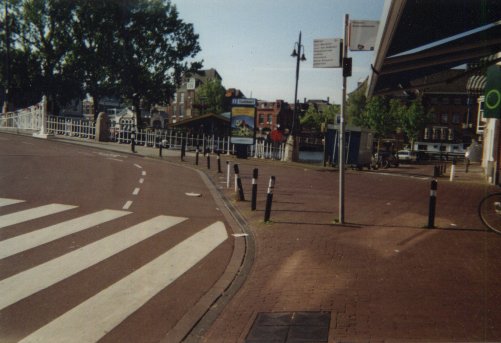
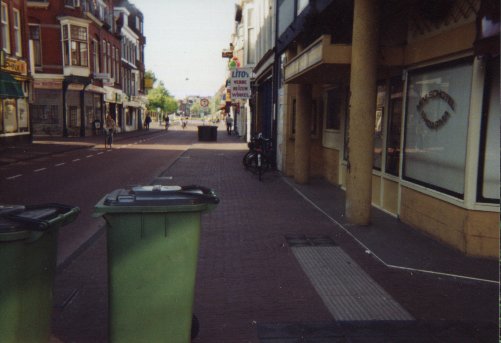
A fantasy shop, selling statuettes of unicorns and dragons, "charged" rune talismans, crystals, African art, "Magic - the Gathering" cards and other little doodads. The triangular sticker on the window requests people not to park their bicycles here. The posters on the door are probably for events like bongo workshops and reiki healing sessions. I deeply enjoy hanging around in front of shops like these.
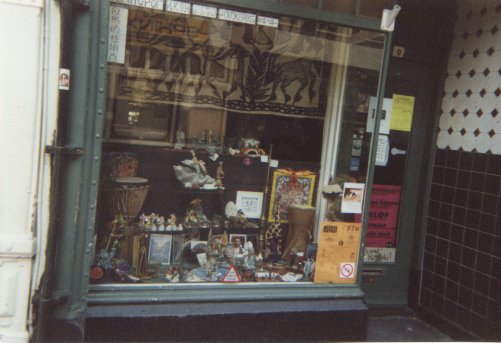
Down to the "Morsstraat": a very ornamental street lamp to the right, strange metal shapes to tie bicycles to so at least they won't be parked against shop windows, and a little gate right at the end with an onion-shaped top. Bicycles can pass right through this gate, cars have to go around it.
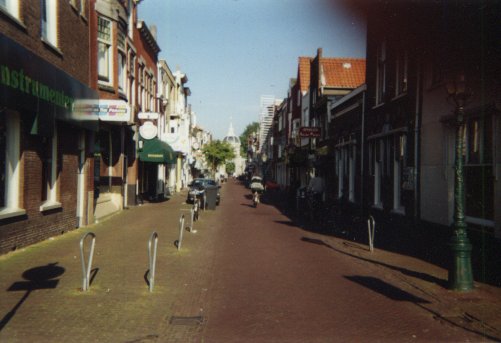
Visual comic irony: under the windmill, symbol of Dutchness, in an overall very Dutch setting, walks a person who is clearly not a native. A common sight in Leiden, and not so comic to the anonymous many who almost voted to power the Dutch equivalent of Haider, or should that be the other Austrian chappie whose name begins with an H? This person's manipulation of national xenophobia for his own ends led to the first political assassination in a long time, which was denoted "a blow to democracy". I think the real blow to democracy would have been letting the bastard live to win the elections.
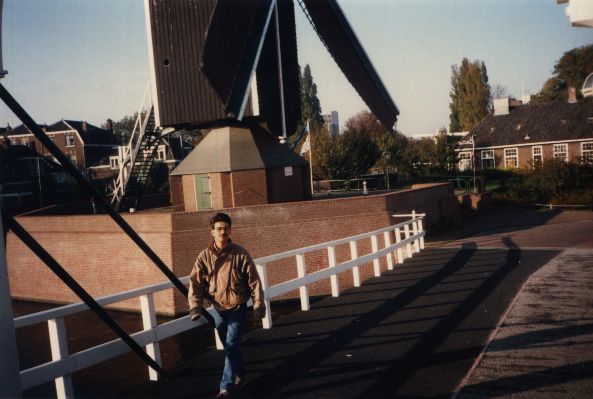
These pictures are all of the horror called "Diamantbuurt", where I had to go to get a wart removed with, er, liquid nitrogen? The block of houses with lots of greenery around it is where the richer people live. The metal container with "PAPIER" on it is one of the containers I made pilgrimages to with bags of old newspapers and the like, after Leiden placed its own paper containers and I no longer had to go to Amsterdam. The road dipping under the other road in the last picture, which is where bicycle-owners like myself enter and leave the neighbourhood, I dubbed "the road to freedom", although most of non-central Leiden looks like this.
